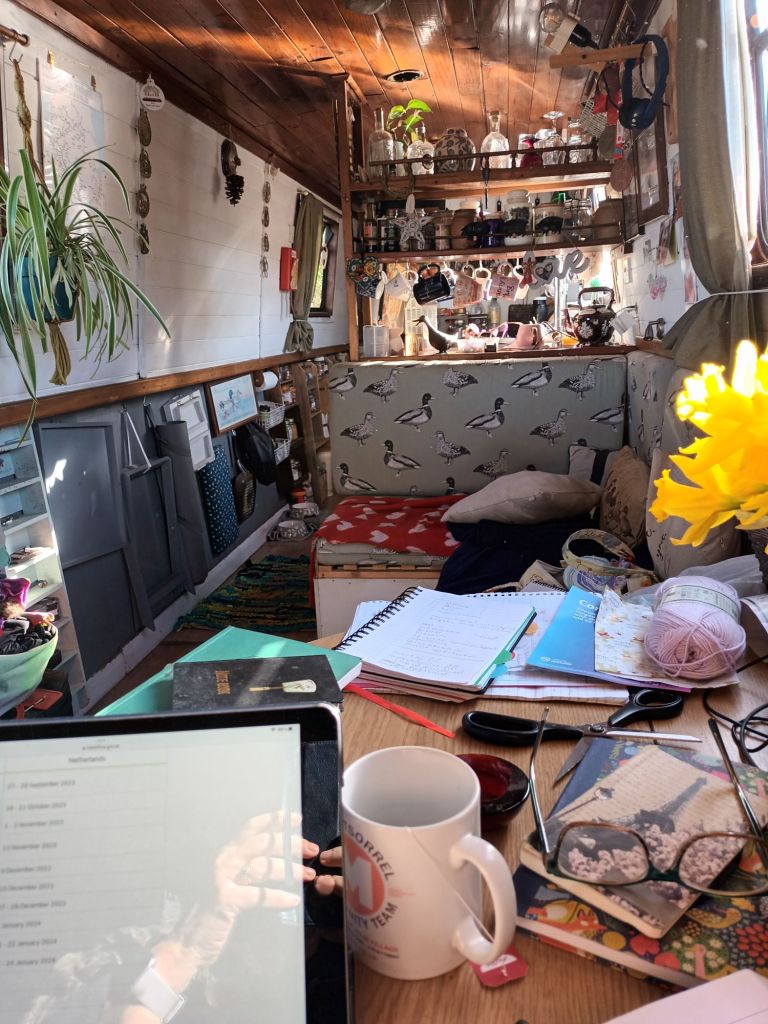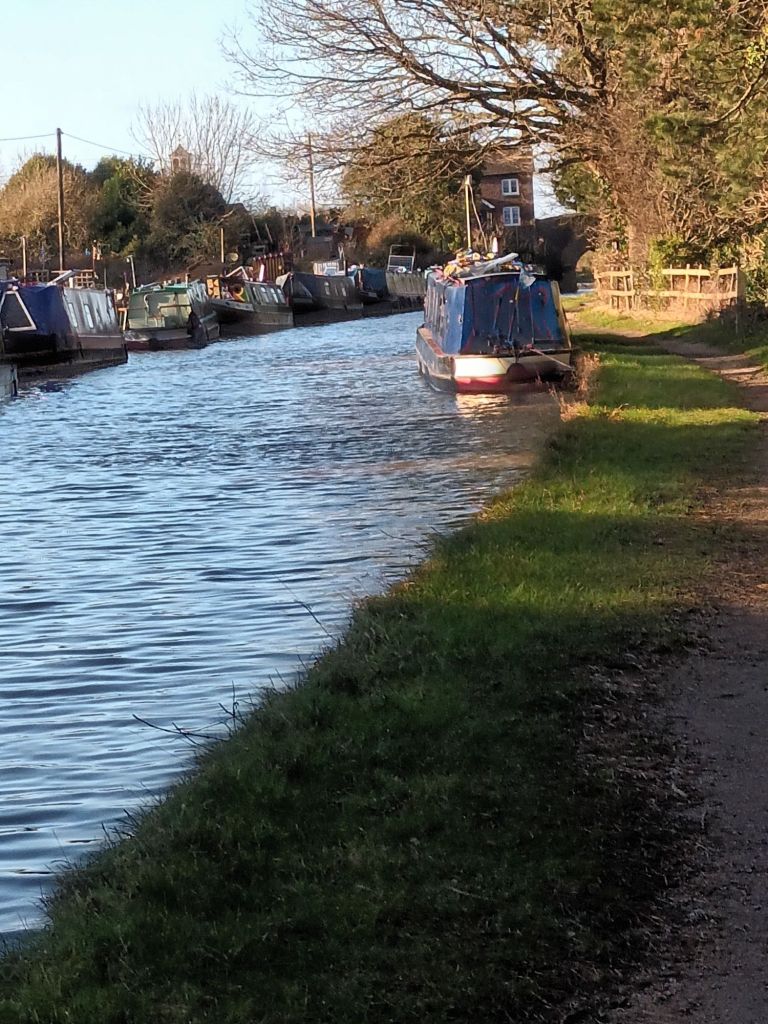It’s been a stormy, destructive week for so many. Hot on the heels of last week’s Storm Henk we’ve had to contend this week with both Storm Isha and Storm Jocelyn. The winds are still strong, but we seem in a time of respite with sun streaming through the boat windows.

It’s interesting that we are already approaching K in the storm list, though I’ve seen no indication of when Storm Kathleen will strike. The last time the UK reached the Ks was with Storm Katie in the 2015-15 season.
Since we moved into our floating home and office in September 2020 we’ve lived through 26 named storms. Some stay in the memory. All require some planning if there’s an advance warning from the Met Office, but you can’t always get everything right.
Our main choice is to get off rivers or avoid getting onto rivers when storms are forecast. This autumn we cruised down to the Midlands from Yorkshire. We had intended heading onto the River Soar to be close to family, but we are so relieved we couldn’t get on initially in October because of strong flow warnings. Since then, there have been storm damage problems along the Soar, and the level of the river has been fluctuating wildly.

Three boats have sunk on the Soar during the recent storms. Two still haven’t been recovered – one up against the County Bridge at Barrow upon Soar and the other at Redhill Marina.
Canal levels can generally be managed in a way rivers cannot as we’ve seen again this year.
The River Soar discharges into the Trent. The River Trent has reached record levels this month, breaching previous height records set as recently as 2020. There is nowhere for the excess water in ths Soar to go but upwards and outwards.
This area of the East Midlands has been hit with rainfall between October and now, that is 150% above the average rainfall levels set between 1991-2020. Villages have flooded, as marinas too. It is surprising in some ways that so few boats have been swept away and/or sunk.
As storms hit, Canal and River Trust the charity with responsibility for our canals and some rivers need to work with the Environment Agency who look after the major rivers to reduce impact of flooding and manage the situation for home and business owners, either floating or static. Storms Babet, Gerrit and Henk have caused significant damage in the Midlands. But it is out of storm time when both need to work on maintenance to ensure drainage and structures are sound and effective.
As liveaboard boaters we seek particular attributes for mooring spots on canals when winds are forecast. We look both up and down. Looking up to avoid obvious tree dangers – ones that look dead or dying, ones that overhang the cut, and ones that look as if they could shed branches onto us. You can’t always get it right, but we’ve been lucky so far.

We look down to find mooring that gives us maximum security. Rings or bollards set into firm concrete are good, as is strong metal piling alongside sound unfolded towpath that allows us to use chains around it to attach our ropes.
We moved from a mooring on the Ashby where we were on rings but under over hanging trees on both sides of the canal, to where we now are on the Coventry. we made sure we were stocked up with water and fuel
We are moored now to metal piling on a sound, well-drained towpath. Whilst there are trees nearby, the slope of the ground takes them away from the canal. we gave some shelter from a hill.
So far it’s been a good choice. Weve been iced in, blown about and had torrential downpours. The result has been a few branches down on the towpath and destruction limited to the bird feeders we’d put out. Mind you, finding them in the undergrowth has led to more destruction of my now less-than-waterproof winter coat.

In 2021-2 we were on the Grand Union Canal in Chester when three violent storms hit within a week. Elsewhere in the country three people died and 1.4million people were left without power as a result of Storms Dudley, Eunice and Franklin.
Eunice alone with its extensive flooding cost Canal and River Trust an initial £300,000 with a final cost of around £1million. That’s a lot of for any charity to find. This year they’ve had to be sorting fallen trees, towpaths washed away and some structural damage too.
We were able to tie up to mooring rings in that case, set into concrete and it all held us safe. We checked ropes every few hours at the height of the storm. There were waves with white tops coming down the cut at times. it’s only time I’ve felt seasick on a narrowboat.

A bizarre highlight of Storm Franklin was being bashed by a wheelie bin which we fished out. That was a relatively lightweight, if large, piece of debris but that is another issue of storms we shall need to watch when we do move.
There are risks for boaters of weakened buildings and trees as well as large chunks of debris floating in the water. Large branches are probably the worst and most dangerous we regularly encounter after high winds. Flooding leaves thick, slimy mud – lethal around locks and moorings. A drying wind such as we have today is hugely welcome. Let’s hope for many more of them and that Kathleen doesn’t make an appearance at all this year.